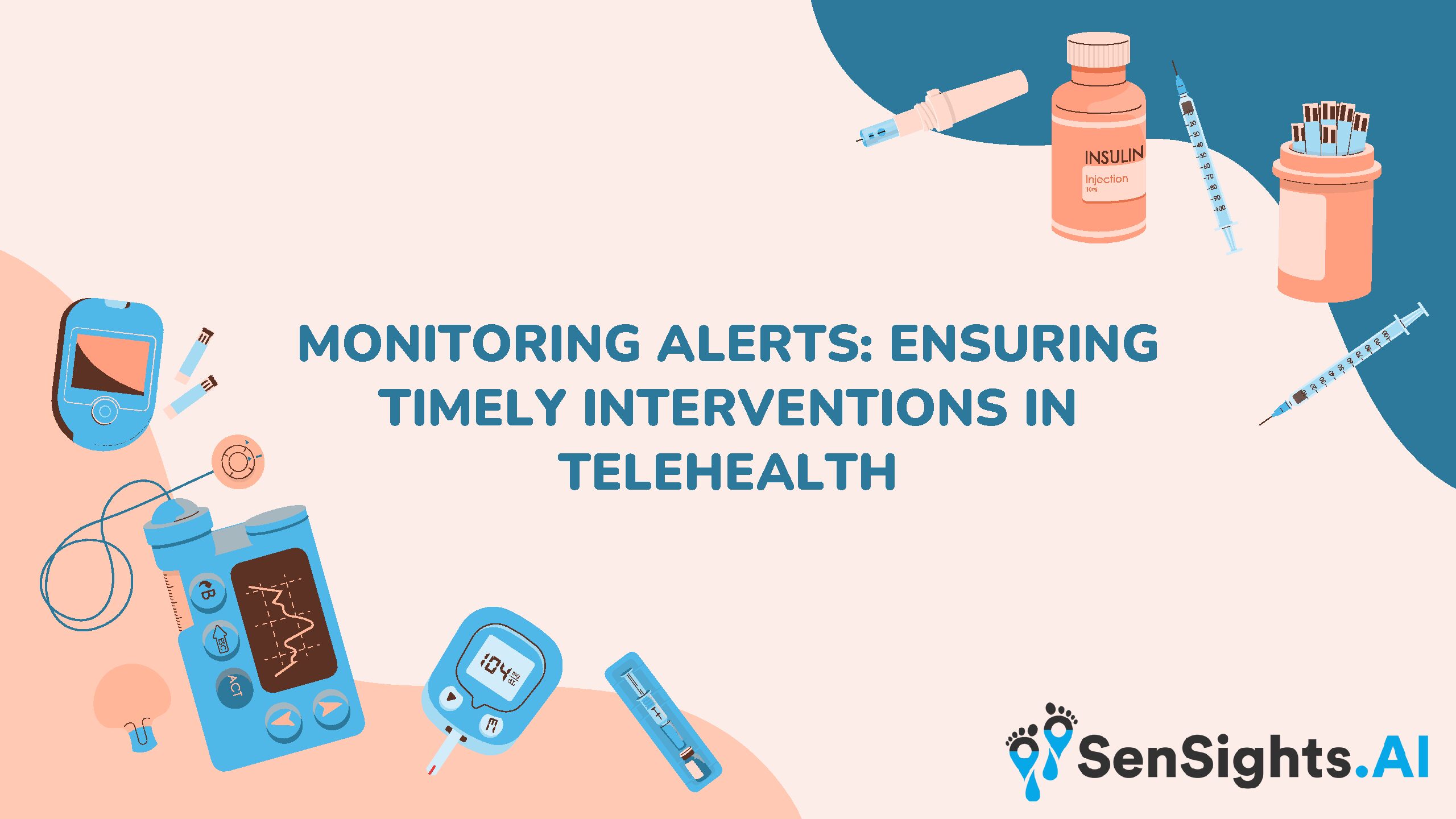Medically Reviewed By: Dr Alex Evans
Image Credit: Canva
Looking for reliable health monitoring devices?
Key Takeaways
- Telehealth monitoring alerts enable real-time health tracking and early detection of health issues, ensuring timely interventions.
- Managing chronic diseases in telehealth is made more effective through monitoring alerts, enhancing patient care and quality of life.
- Balancing technology with a human touch is essential in telehealth, building trust and empowering patients to take an active role in their healthcare journey.
In today’s fast-paced world, where technology is advancing at an unprecedented rate, telehealth has emerged as a crucial component of healthcare. The convenience of remote medical consultations has transformed the way we approach healthcare services. However, like any other system, telehealth is not without its challenges. One of the critical aspects of telehealth that demands attention is monitoring alerts. This article explores the significance of monitoring alerts in telehealth and how they play a pivotal role in ensuring timely interventions.
I. Understanding the Telehealth Landscape
Telehealth, also known as telemedicine, is the provision of healthcare services remotely, often through video calls, phone calls, or other digital means. It has gained immense popularity in recent years, especially during the global pandemic when in-person visits became challenging.
A. The Telehealth Revolution
The advent of telehealth has revolutionized healthcare delivery by breaking down geographical barriers and providing access to medical expertise from the comfort of one’s home. Patients can consult with healthcare professionals without the need for lengthy commutes or waiting rooms.
B. The Role of Technology
Technology plays a pivotal role in telehealth, enabling secure and efficient communication between patients and healthcare providers. Electronic health records (EHRs), medical apps, and wearable devices have further enhanced the telehealth experience.
II. The Significance of Monitoring Alerts
One of the critical elements that ensure the effectiveness of telehealth is monitoring alerts. These alerts are automated notifications generated by monitoring systems to inform healthcare providers and patients about specific health-related events or conditions. Here’s why monitoring alerts are vital:
A. Real-time Monitoring
Monitoring alerts allow for real-time tracking of a patient’s vital signs and health metrics. This ensures that any deviations from the norm are immediately detected, enabling prompt action.
B. Early Detection of Issues
By continuously monitoring a patient’s health, telehealth systems can identify potential issues before they escalate. This early detection can be a lifesaver in many cases.
C. Chronic Disease Management
For patients with chronic conditions, monitoring alerts are a lifeline. These alerts help patients and healthcare providers manage conditions like diabetes, hypertension, and heart disease effectively.
III. Challenges in Monitoring Alerts
While monitoring alerts are essential, they come with their set of challenges. Addressing these challenges is crucial to ensuring the reliability and effectiveness of telehealth systems.
A. False Alarms
One common issue with monitoring alerts is false alarms. These can lead to unnecessary panic and increased healthcare costs. It’s essential to fine-tune monitoring systems to reduce false positives.
B. Data Security
With sensitive health data being transmitted, data security is of utmost importance. Telehealth systems must employ robust security measures to protect patient information.
IV. The Human Touch in Telehealth
While technology and monitoring alerts are indispensable in telehealth, the human touch remains essential. Healthcare providers must strike a balance between technology and empathy.
A. Building Trust
Patients need to trust that their healthcare providers are genuinely concerned about their well-being. Effective communication and a compassionate approach are essential.
B. Empowering Patients
Telehealth should empower patients to actively participate in their healthcare journey. Education and guidance are key components in this regard.
V. Conclusion: Bridging the Gap
In conclusion, monitoring alerts are the guardians of telehealth, ensuring that timely interventions occur when needed. They bridge the gap between patients and healthcare providers, making healthcare more accessible and efficient. However, it’s essential to address challenges such as false alarms and data security to maximize the benefits of telehealth.
In this era of rapid technological advancements, telehealth is here to stay. It is up to us, healthcare providers and patients alike, to embrace this technology while preserving the human touch that makes healthcare truly meaningful. By doing so, we can ensure that telehealth continues to evolve, providing quality care to all, regardless of geographical boundaries.
Want to know more about the future of telehealth?
MarkiTech has various subsidiaries with products and services targeted towards digital healthcare and telehealth/telemedicine and virtual clinic with laser focus on helping seniors age in place and help their caregivers.
Sensights.ai is a company focused on remote patient monitoring and aging solutions, which utilizes artificial intelligence to track the health of patients and keep a round-the-clock connection between caregivers and patients.
As well, Veyetals uses rPPG and AI modeling algorithms to capture the light reflected by the blood vessels under a patient’s skin to measure vitals anytime, anywhere.
Lastly, we are now launched our latest Mental Health AI Scribe tool called CliniScripts.com

